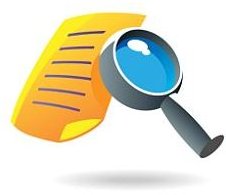Exchange Server 2007 Migrating - Transition to Exchange Server 2007
Migrating to Exchange Server 2007 - Difference between Migration and Transitioning
If you are performing a transition, you are upgrading to Server 2007 from previous versions of Exchange Server. On the other hand, if you are migrating, you are transferring data from any server - be it Exchange or Lotus - to Exchange Server 2007.
NOTE: For migration to Exchange Server 2007 from Lotus or even MS Exchange Server 2003, you need a different machine with Exchange Server 2007 installed. Once you have that machine ready with Exchange Server 2007, you can transfer all the data to the new server - losing all the data on the older server. It is important that you make a backup in case of migrations if you want to retain the Lotus Notes data. If you opt for Exchange Server 2007 organization - from Exchange Server 2002/3, you may want to go for a transition so that you retain a copy of the data on the older server.
It is just like COPY and MOVE. In case of MIGRATION, you perform a MOVE and in case of a transition, you perform a COPY of the data on older server.
**
IMPORTANT: It is not possible to migrate directly from Exchange Server below version 2000 to Exchange Server 2007. First, you have to migrate to Exchange Server 2002 or Exchange Server 2003 (from previous versions: Exchange Server 4 or Server 5.5). This done, you can perform a transition to Exchange Server 2007. This means:
- You cannot perform a direct migration to Exchange Server 2007 from Exchange Server 5.5 or Server 4.
- You can perform a direct migration to Exchange Server 2007 from Lotus Notes or other Non MS Servers.
In all cases, you need to have a machine with Exchange Server 2007 installed so that you can migrate or transition to the new Server.
Let us see the possible scenarios for migrating to Exchange Server 2007 in the following section.
Exchange Server 2007 Migration - Options Available
1. Migrating from Lotus Notes to Exchange Server 2007: Set up a machine with Exchange Server 2007. Remember that you are migrating so you may wish to create a backup of all the data. Once you have backup, you proceed with migration to Exchange Server 2007 using Lotus migration tools. Using these tools, you move the database and mailboxes to the machine running Exchange Server 2007. You have to repeat the procedure for each server. Once done, you have a fine tuned Microsoft Collaboration Suite running on Exchange Server 2007. This is somewhat tough, but it is the best method for migrating to an Exchange server from non MS servers.
2. Migrating from Server 5.5/Server 4 to Exchange Server 2007: Migrate data to Exchange server 2003. Migration means you move the data to the new server. From Server 2003, you can opt to migrate to Exchange Server 2007 or to transition to Exchange server 2007. For transition, you do not require a new forest/organization. If you chose migration (move data), it is better to have a data-backup as you will get an entirely new Server organization.
3. Migrating from Servers 2003/2002 to Server 2007: If you are migrating, back up data and proceed with migrate. This process involves moving all data to get a NEW SERVER 2007 ORGANIZATION.
4. Transitioning to Server 2007 from Server 2003: This is like upgrading the same server organization. You have both Server 2003 and Server 2007 on the network. You copy all the data to the Exchange server 2007 and then deprecate the older server. At the end of this process, you have the SAME ORGANIZATION running on Exchange Server 2007.
NOTE: While transitioning from 2003/2002, you may get an alert saying you will lose any changes since your last synchronization. You need not worry. Once your transition is successful, the Exchange Server 2007 ActiveSync takes over to synchronize all mailboxes from Server 2003/2002 - avoiding loss of data.
The above cheat sheet on Exchange Server 2007 Migration offers you an overview of possibilities and limitations that you may face while migrating to Exchange Server 2007 so that you can handle the process efficiently.
This post is part of the series: Microsoft Servers - SharePoint and Exchange Servers
A combination of XENIX based messaging system and MS Mail, Exchange Server 4 was released in ‘93. The SharePoint server, targeted at individuals and small businesses offers a better way of storage and collaboration. This series contains articles related to these servers.
